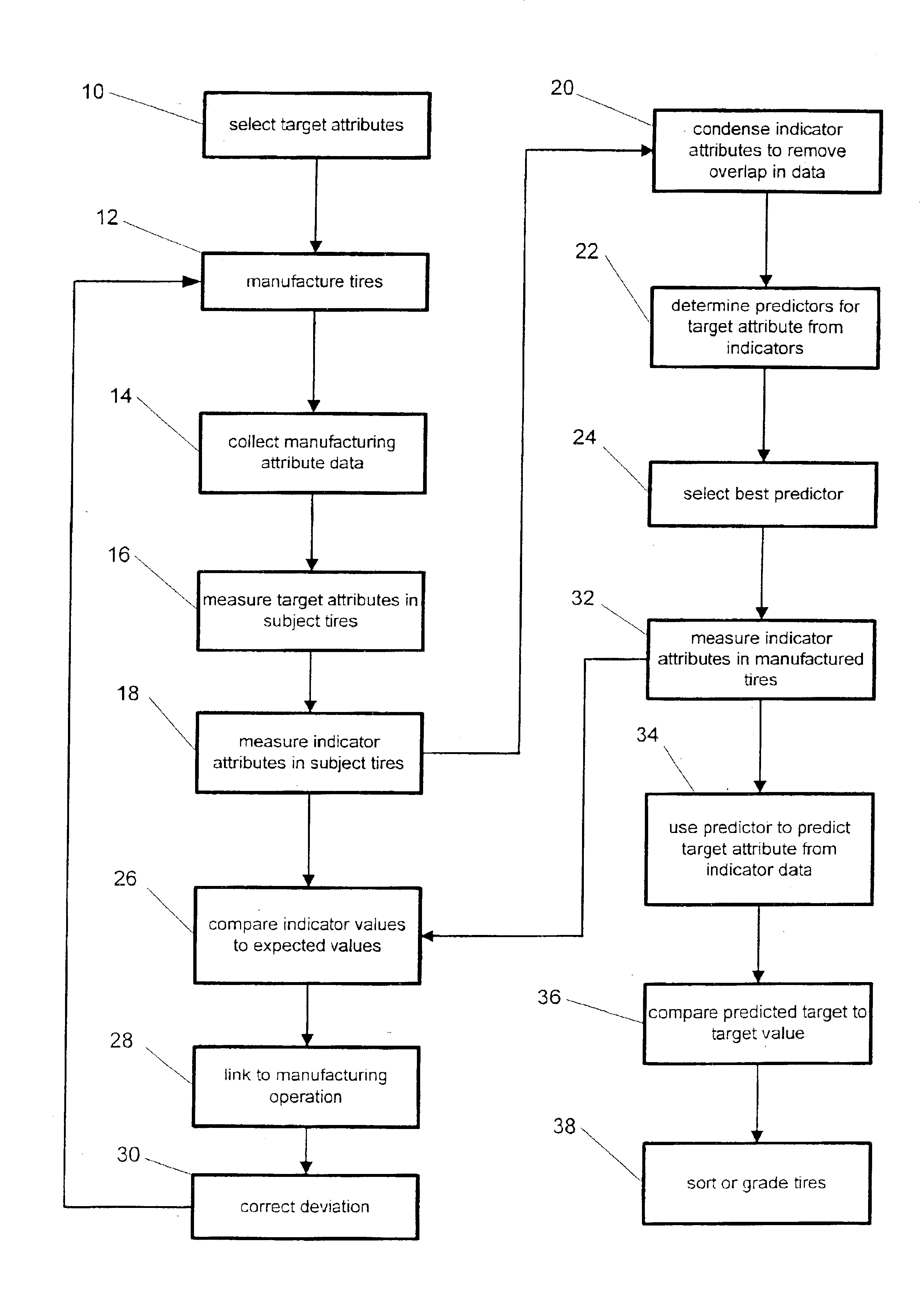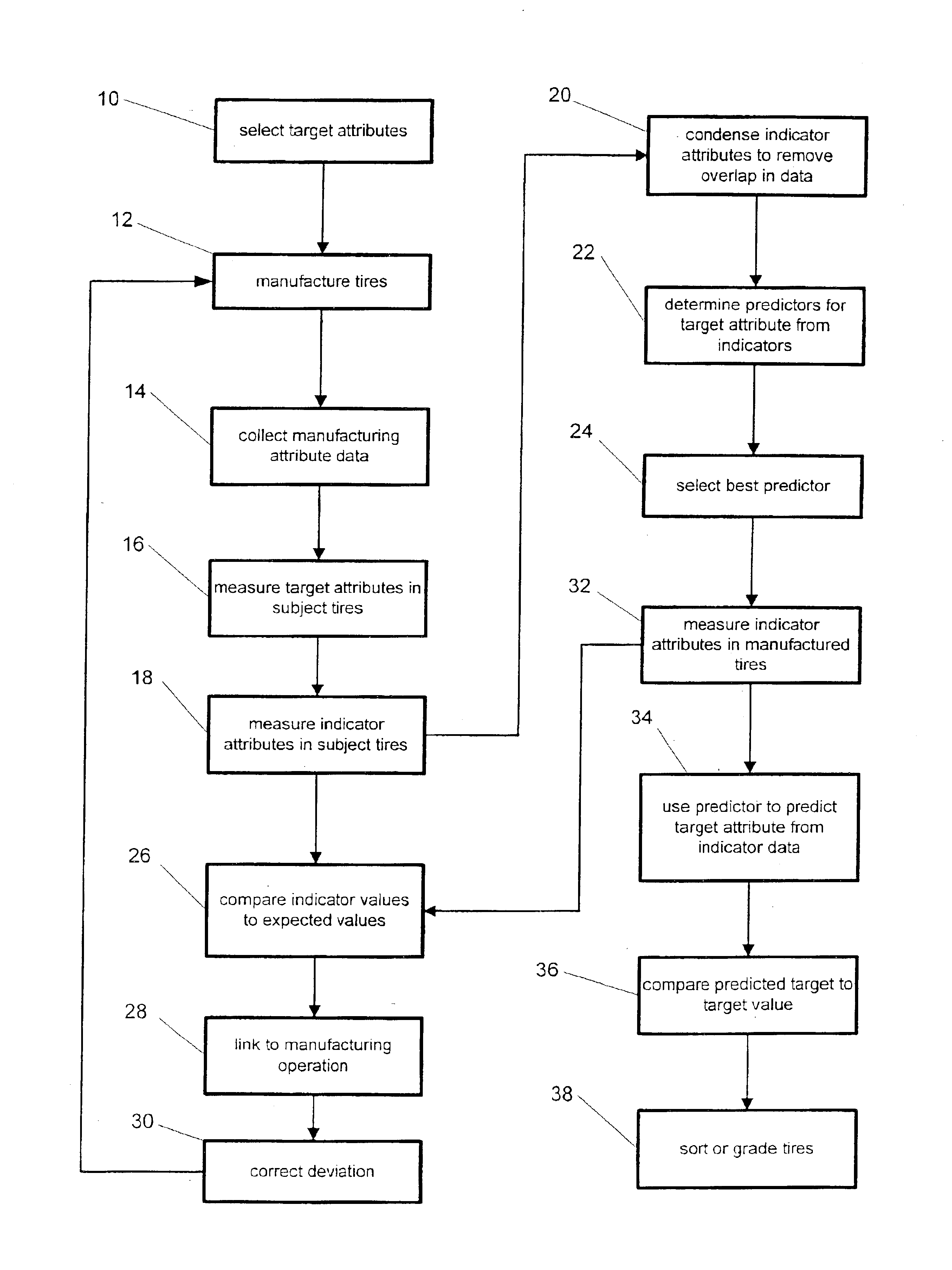Method of analyzing and controlling the uniformity of tires
a technology of uniformity and analysis method, applied in the field of tire uniformity, can solve the problems of tire non-uniformities that are important, the non-uniformities present in the tire structure produce periodic-varying forces, and the conventional tire building method has many opportunities to produce non-uniformities in tires
- Summary
- Abstract
- Description
- Claims
- Application Information
AI Technical Summary
Problems solved by technology
Method used
Image
Examples
Embodiment Construction
The goal of controlling tire uniformity is to manufacture tires that generate minimal annoying vibration transmissions to the occupants. Because these vibrations may make riding on the tires uncomfortable, from the perspective of the occupant, the goal is to control the comfort of the tires. The present invention provides a method for evaluating the uniformity of tires and controlling manufacturing for uniformity that improves on conventional methods by identifying and focusing on tire attributes relevant to comfort for the vehicle on which the tire will be used. A relevant tire attribute is a measurable characteristic of the tire that can be related to the comfort of the tire on a vehicle. Further, the invention allows the continuous correction of manufacturing procedures to improve uniformity.
Force variations measured at the wheel axle during tire rotation only indirectly measure non-uniformities. Because force variations are directly related to the vibrations transmitted to the v...
PUM
 Login to View More
Login to View More Abstract
Description
Claims
Application Information
 Login to View More
Login to View More - R&D
- Intellectual Property
- Life Sciences
- Materials
- Tech Scout
- Unparalleled Data Quality
- Higher Quality Content
- 60% Fewer Hallucinations
Browse by: Latest US Patents, China's latest patents, Technical Efficacy Thesaurus, Application Domain, Technology Topic, Popular Technical Reports.
© 2025 PatSnap. All rights reserved.Legal|Privacy policy|Modern Slavery Act Transparency Statement|Sitemap|About US| Contact US: help@patsnap.com


